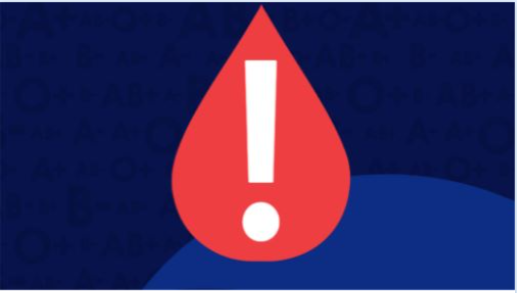Research Area
The focus of our lab’s research is to find novel means to support the prevention of onchocerciasis, also known as river blindness, and lymphatic filariasis, also known as elephantiasis. To achieve this, we have been studying the biology of Onchocerca volvulus and Brugia malayi, the causative agents of these diseases, respectively. Information gained by studying the basic biology and host-parasite interactions has allowed the identification of key pathways and molecules that are essential for parasite development, propagation and/or survival. While many aspects of our research are basic, our ultimate goal is to identify new strategies by which humans can be protected from these parasitic infections by either chemotherapeutic (drugs) or immunological (vaccines) means.
Over the years we have identified more than 30 O. volvulus larval antigens of which 7 were proven to be protective against infection by third-stage larvae in the mouse model. We have recently made considerable progress and identified two O. volvulus protective vaccine antigens, Ov-103 and Ov-RAL-2, with a proven efficacy in two small-animal models and in cattle exposed to natural infection with O. ochengi, the closest filarial relative of O. volvulus, as well as with a proven product development and production pathway. These two antigens when used as an adjuvanted bivalent vaccine or as an adjuvanted fusion protein exhibit the highest probability for success at inducing protective immunity in humans. We are in the process of moving forward to the next stage on the critical path to an onchocerciasis vaccine development for Africa (http://www.riverblindnessvaccinetova.org), the TOVAxTM clinical development plan in which a Phase 1, randomized, placebo controlled trial will be performed to evaluate the safety, tolerability, and immunogenicity of the TOVAx™ vaccine in healthy adults.
The laboratory is also engaged in collaborative research efforts to discover new drug therapies including the repurposing of known safe drugs for the prevention and treatment of river blindness. The goal is to identify novel, potent macrofilaricidal drug candidates that can kill adult worms directly and/or by interfering with essential pathways involved in the endosymbiotic relationship between the filarial worms and the endosymbiotic bacterium of the genus Wolbachia that they harbor. These endobacteria are essential, as elimination of the endosymbiont leads to arrested larval development and the sterilization of the adult female parasite.
The laboratory also studies the ability of O. volvulus to influence the immune system and reduce its ability to fight infection by studying the immunomodulatory properties of distinct parasite proteins. Especially, we are focused on a naturally occurring secreted protein from O. volvulus (rOv-ASP-1) with intrinsic immunostimulatory properties that it is a powerful immunostimulatory innate adjuvant; it promotes a balanced Th1/Th2 antibody response and Th1 cellular responses to several soluble vaccine candidate antigens as well as commercial inactivated or recombinant viral vaccines, including the seasonal influenza vaccines. This highly effective and safe innate protein adjuvant (rASP-1) can be used in a simple aqueous formulation of vaccines containing a much lower dose of the target vaccine antigen. We are presently testing the hypothesis that combining rASP-1 with other innate cytoplasmic PRR adjuvants will synergistically potentiate more effective vaccine-induced immune responses against various pathogens specifically in aged populations. We posit that by synergistically activating early innate immune signaling that critically contributes to the establishment and nature of immune responses and the duration and intensity of immune activation, we may also help restore the aging-associated deficits in the critical regulatory pathways of the antiviral responses. This research has implications for the preventive treatment of various infectious diseases.
Funding Support
- NIH U01 AI160421 Lustigman (PI) 08/2021– 05/2026 “Restoring age-dependent vaccine unresponsiveness by a novel ASP-1 adjuvant combination”
- NIH R01 EY033195 Lustigman/Makedonka/Janetka (Multi-PI) 09/2021 – 06/2025 “Integrative approach for accelerating filarial worm drug discovery to treat river blindness”
- NIH R01 AI174587 Lustigman/Makedonka/Janetka (Multi-PI) 09/2023 – 08/2027 “Innovative therapeutic strategies to support elimination of river blindness”
- NIH R01 AI078314 Lustigman (PI) 08/2009 – 02/2024 “The development of a recombinant vaccine against human onchocerciasis”
Education and Training
Postdoctoral Institution
- The Walter and Eliza Hall Institute of Medical Research
Degree Institution
BSc, MSc, PhD; Hebrew University of Jerusalem
Sara Lustigman, PhD, Researcher Profile PDF
Patents
- 1999 Method of use of phthalocyanines to inactivate blood borne parasites: Paul Gottlieb, Ehud Ben-Hur and Sara Lustigman (U.S. Patent No. Us 5,985,331)
- 2004 Angiogenic Onchocerca volvulusproteins and uses thereof: Sara Lustigman, Eric Pearlman, and Thomas Unnasch (U.S. Patent No. Us 09-541,759)
- 2010, 2015 Adjuvancy and immune potentiating properties of natural products of Onchocerca volvulus: MacDonald AJ and Lustigman S (U.S. Patent No. US 7,700,120 B2 and US 9,017,699 B2)
Publications
Full List of Publications


